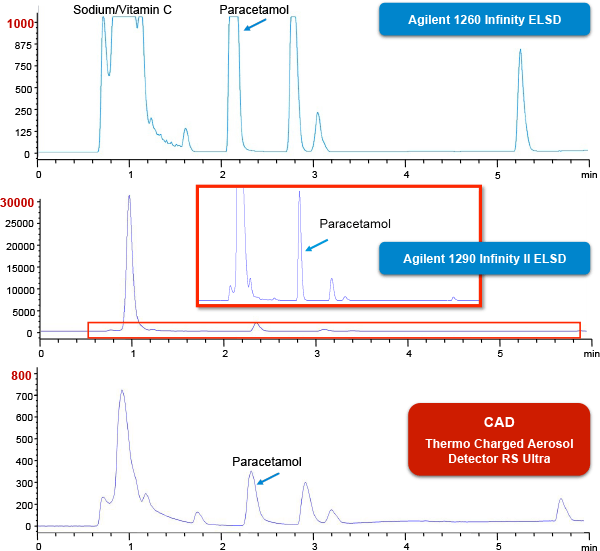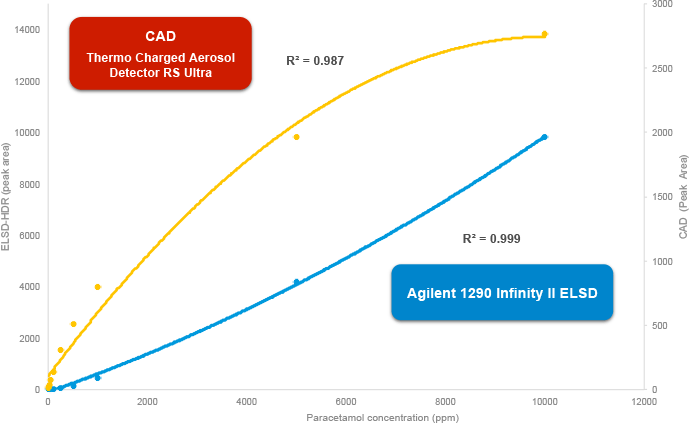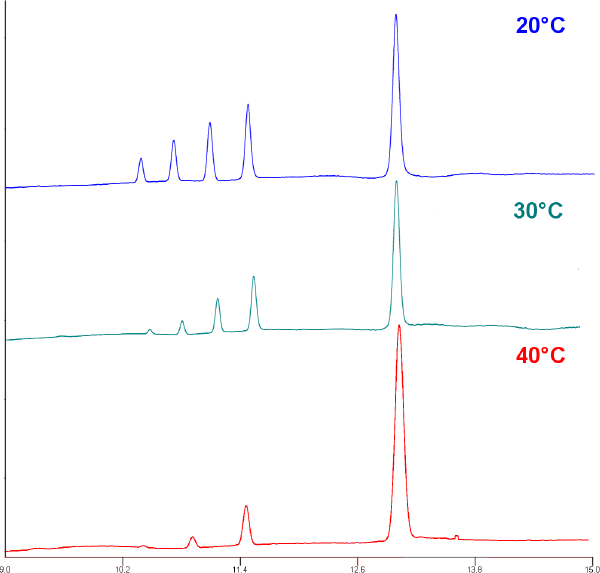Access Agilent eNewsletter June 2015
>> Update My Profile | Subscribe to Access Agilent | Article Directory
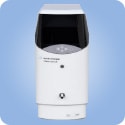
Agilent 1290 Infinity II ELSD: Reproducible, wide-dynamic-range analyses of compounds other universal detectors miss
By Graham Cleaver
Agilent Business Development Manager for ELSD/GPC/RID
The evaporative light scattering detector (ELSD) is a popular LC tool because it is a universal detector that responds to compounds that lack a UV chromophore. However, in the past this detector had limited sensitivity and dynamic range, and provided poor quantification of low-molecular-weight compounds. Now, the new Agilent 1290 Infinity II ELSD with the Agilent 1290 Infinity II LC System overcomes these limitations and provides a high-efficiency alternative to other universal detectors.
With this new ELSD from Agilent, a high-performance glass nebulizer offers better reproducibility. A specially designed high-dynamic-range photomultiplier extends the range of analysis to four orders of magnitude. You can now detect the main compound, impurities and additives in a single run. A unique cooled evaporator tube makes it possible to quantify semivolatile compounds of low-molecular-weight samples at temperatures as low as 10 °C. A short-wavelength laser light source reduces the limit of detection by a factor of ten compared with previous models.
Greater dynamic range means half the analyses
Agilent’s new 1290 Infinity II ELSD offers a major improvement in dynamic range compared with today’s ELSD technology. Prior to the Agilent 1290 Infinity II detector, evaporative-light-scattering designs were limited to three orders of dynamic range. By extending this range to four orders of magnitude, you can now detect the main peak of interest, additives, and impurities in a single injection, which cuts the analysis times in half (Figure 1).
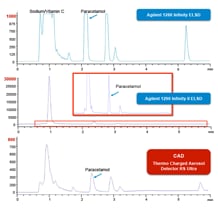 Enlarge
Enlarge
Figure 1. Detect drug plus impurities in a single injection with the extended dynamic range of the Agilent 1290 Infinity II ELSD.
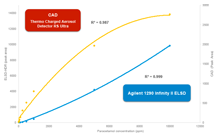 Enlarge
Enlarge
Figure 2. CAD response starts to plateau at higher sample concentrations, while the Agilent 1290 Infinity II ELSD shows better linearity over four orders of magnitude.
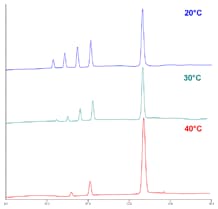 Enlarge
Enlarge
Figure 3. Unique low-temperature operation provides better sensitivity for semivolatile compounds.
Improved linear response
Having addressed limitations in dynamic range of ELSD, the Agilent 1290 Infinity II ELSD also demonstrates an improvement in linearity of response compared with current ELSD and charged aerosol detection (CAD) instruments. The Agilent 1290 Infinity II ELSD shows typical correlation coefficients of better than 0.999 across the four orders of dynamic range (Figure 2). In certain cases, you get a linear calibration curve, which offers greater confidence in results compared with a more traditional log/log fit.
Reliable detection of difficult semivolatile compounds
With proprietary secondary gas flow and an evaporator tube that you can cool down to 10 °C, the Agilent 1290 Infinity II ELSD offers unrivalled sensitivity for semivolatile detection. Typically, 30 °C is the lowest evaporation temperature the charged aerosol detector and other ELS detectors can achieve. However, as Figure 3 demonstrates, even at 30 °C semivolatile compounds are destroyed. It is only by analyzing samples at less than 30 °C using the Agilent 1290 Infinity II ELSD that you get a true understanding of what is in your sample.
Consistent response across solvent gradients
While lower evaporation temperatures give you a more accurate mass balance for your sample mixture, you achieve truly representative results by overcoming solvent gradient effects. It is widely documented that peak response changes according to solvent composition across a gradient. With CAD, this effect is extremely severe and you can compensate for it by running an inverse gradient with a second pump.
The Agilent 1290 Infinity II ELSD offers a more cost-effective approach – use of gas flow programming to compensate for gradient effects. With its proprietary gas flow control, you can use the dedicated Agilent Dimension software to program a gas flow gradient that maintains a constant ELSD response.
Why choose the new Agilent 1290 Infinity II ELSD?
- The Agilent 1290 Infinity II ELSD has a wide flow range, which makes it suitable for HPLC and semi-preparative applications.
- A unique peltier cooled evaporator tube gives superior sensitivity for semivolatile and thermally unstable samples (more information).
- Extended detection range of four orders of magnitude enables you to identify and quantify all compounds in a complex mixture in a single run (more information).
- Gas flow can be varied during a run and programmed using Dimension software. This flow control gives a uniform response for all eluting compounds across a solvent gradient by counteracting solvent enhancement effects.
- The heated nebulizer makes the detector SFC-compatible without any additional modification, while the low-dispersion design delivers superior peak shape and high data rates for UHPLC.
- The detector is transparent to DMSO, which would otherwise mask early-eluting compounds (DMSO technical note).
- Unlike the CAD and other ELS detectors, the Agilent Infinity II ELSD offers all of these features in one flexible design (pharmaceutical applications booklet).
Do you want uncompromising ELSD performance? e? your lab needs sensitive, reproducible light scattering detection over a wider dynamic range, learn more about the Agilent 1290 Infinity II ELSD today.
>> Update My Profile | Subscribe to Access Agilent | Article Directory
